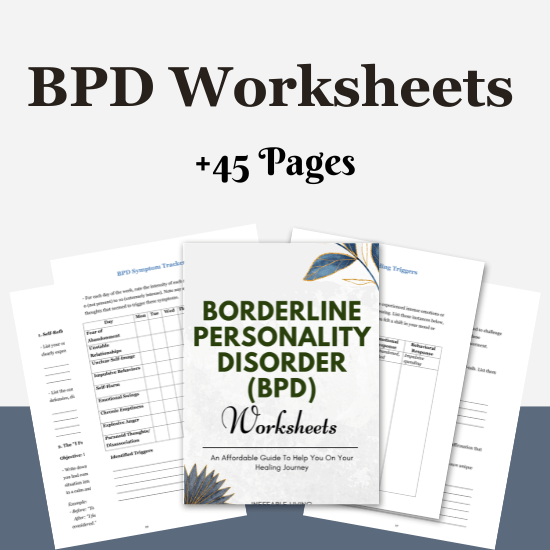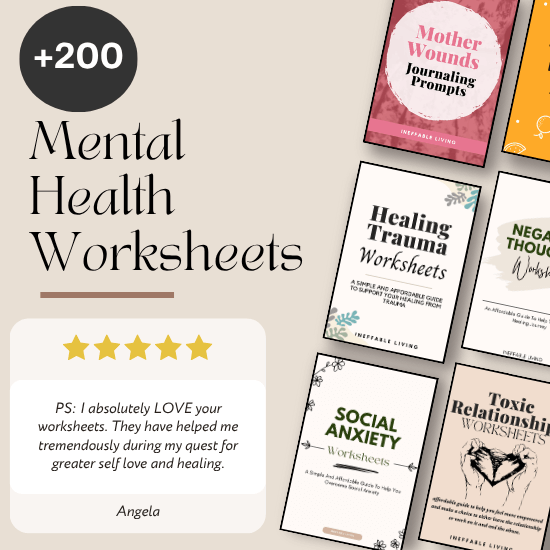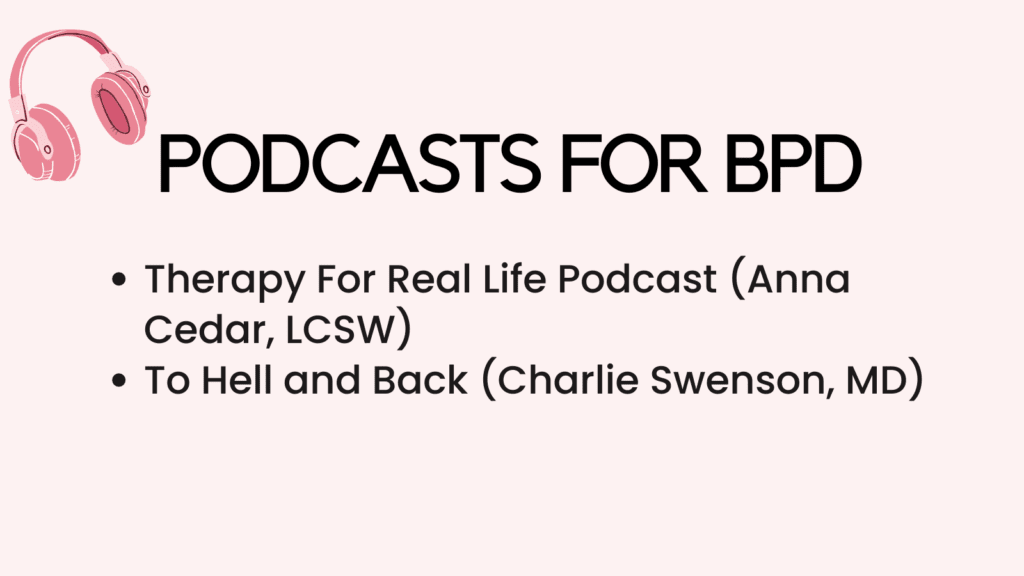One of the most painful and confusing symptoms of Borderline Personality Disorder (BPD) is splitting. It can make relationships feel like an emotional rollercoaster — from intense closeness to sudden rejection, sometimes within the same day. If you’ve ever felt idolized and then suddenly discarded by someone with BPD, you’ve likely experienced splitting firsthand.
Understanding what splitting is — and how to cope with it — can help you maintain healthier boundaries, protect your peace, and respond with compassion instead of confusion.
What Is Splitting?
Splitting is a defense mechanism where a person sees people, situations, or even themselves in black-and-white terms: all good or all bad. There’s no in-between. This psychological response often stems from early attachment trauma or invalidation, where the person learned that safety meant idealizing or rejecting others entirely — never both.
For someone with BPD, splitting isn’t manipulation. It’s a way to manage overwhelming fear of abandonment, betrayal, or disappointment.
Related: Top 7 Skills For Coping With BPD [+ BPD FREE Resources]
What It Looks Like in Relationships
Splitting can affect all types of relationships — romantic, familial, or platonic — and often leads to chaotic patterns, such as:
- Idealizing you at first (“You’re perfect. You’re the only one who understands me.”)
- Suddenly devaluing you after a small disagreement (“You never cared about me. You’re just like everyone else.”)
- Shifting from intense closeness to emotional cut-off
- Reacting strongly to perceived criticism or abandonment
- Alternating between needing constant contact and pushing you away
This pattern is exhausting — not just for the person with BPD, but for those close to them.
Why It Hurts So Much
When someone suddenly goes from loving to hating you, it can feel like betrayal. You may question your worth or doubt the sincerity of earlier closeness. Splitting also creates instability, unpredictability, and emotional whiplash — all of which can make the relationship feel unsafe.
But remember: this isn’t about you. It’s about their internal battle between needing closeness and fearing harm.
How to Recognize Splitting in the Moment
The earlier you notice splitting, the better your chances of staying grounded. Look for signs like:
- Sudden emotional shifts with no clear cause
- “You’re either with me or against me” statements
- Drastic changes in how they talk about someone or themselves
- Extreme emotional reactions to perceived slights
Ask yourself: Is this reaction in proportion to the situation — or does it feel like a deeper wound was triggered?
Related: What Is Quiet Borderline Personality Disorder?
How to Cope with Splitting in BPD?
1. Stay Grounded in Reality
When someone with BPD splits on you, their view becomes extreme — but that doesn’t mean you have to follow. Anchor yourself in what you know to be true about yourself and the relationship.
- Write down the facts of what happened
- Remind yourself: I am not as bad as they say — or as perfect as they once thought
- Keep your identity separate from their perception
Their emotional lens may be distorted. Yours doesn’t have to be.
2. Respond, Don’t React
Splitting often comes with intense emotions, accusations, or withdrawal. Reacting impulsively — defending yourself, matching their anger, begging for closeness — only adds fuel.
Instead, take a breath. Pause. Step back.
Respond with calm and clarity:
- “I hear you’re upset. Let’s talk later when we’re both calm.”
- “I care about you, and I won’t argue when things feel this escalated.”
Calm is your superpower in chaos.
3. Practice Detachment With Compassion
Detachment doesn’t mean you stop caring. It means you don’t absorb their emotional swings as your truth.
You can love someone deeply without taking responsibility for their dysregulation. Compassionate detachment sounds like:
- “I’m here for you, but I won’t take on the blame.”
- “I care — and I’m stepping away for now because I need to protect my peace.”
You can be supportive without being consumed.
Related: Borderline Personality Disorder Support Group
4. Create and Uphold Clear Boundaries
Boundaries are your emotional lifejackets. Without them, you’ll get pulled into the tide of their extremes.
Set limits on:
- Communication during intense moments
- Verbal abuse or accusations
- Time and emotional energy you give
Say it clearly:
“I love you, but I won’t continue this conversation if there’s yelling.”
Or: “I need to take space when things feel unsafe.”
You teach others how to treat you by what you allow.
5. Avoid the Trap of Over-Explaining
When someone is splitting, they may demand justification, accuse you of abandonment, or insist you’ve “changed.” Resist the urge to over-explain or prove your loyalty.
You don’t need to argue with their current perception. Instead, stay kind but brief:
- “I understand this feels big right now. I’m still here.”
- “You’re upset, and that matters. Let’s talk when things are calmer.”
Let go of convincing — focus on calm presence.
6. Maintain Your Support Network
Being close to someone with BPD can isolate you — especially when they’re splitting and pushing others away. Make sure you keep your people close:
- Talk to a friend who can give perspective
- Lean on a therapist or support group
- Stay connected to activities and routines outside the relationship
You need a life that’s yours, not defined by someone else’s emotional landscape.
Related: Borderline Personality Disorder (BPD) Resources (Information, APPS, Podcasts, TED Talks, Books)
7. Build Your Emotional Resilience
Splitting often makes you question yourself. Strengthen your inner world so you’re not defined by external chaos:
- Practice journaling to stay in touch with your truth
- Use affirmations like: I can care without losing myself
- Learn to regulate your own nervous system (deep breathing, grounding techniques, meditation)
The more stable you are internally, the less vulnerable you’ll be to their emotional extremes.
8. Educate Yourself on BPD
Understanding the why behind the behavior can shift you from resentment to empathy. Splitting isn’t about cruelty — it’s about survival for them.
- Read about BPD from credible sources
- Explore Dialectical Behavior Therapy (DBT) tools
- Watch videos or attend workshops to learn what helps and what harms
Knowledge won’t fix everything — but it will help you respond with more clarity and less confusion.
9. Know When to Step Back
Coping doesn’t mean tolerating emotional harm forever. If the splitting is constant, abusive, or severely affecting your well-being, it’s okay — and often necessary — to walk away.
You can care deeply and choose distance. That’s not abandonment. That’s self-preservation.
10. Remind Yourself: You’re Not the Enemy or the Savior
Splitting tries to cast people as all-good or all-bad. Resist both roles.
You’re not their villain. You’re also not their emotional savior.
Related: Best 20 Tips On Dating Someone With BPD Without Becoming A Caretaker

Conclusion
Coping with splitting in BPD is not about fixing or walking on eggshells — it’s about knowing your center, holding your boundaries, and responding with grounded care. You can stay compassionate without collapsing into chaos. And each time you protect your peace with clarity and kindness, you create space for both healing and hope — for them and for you.



![BPD Support Groups [Online & In-Person]](https://ineffableliving.com/wp-content/uploads/2022/09/Borderline-Personality-Disorder-Support-Group-1024x576.png)